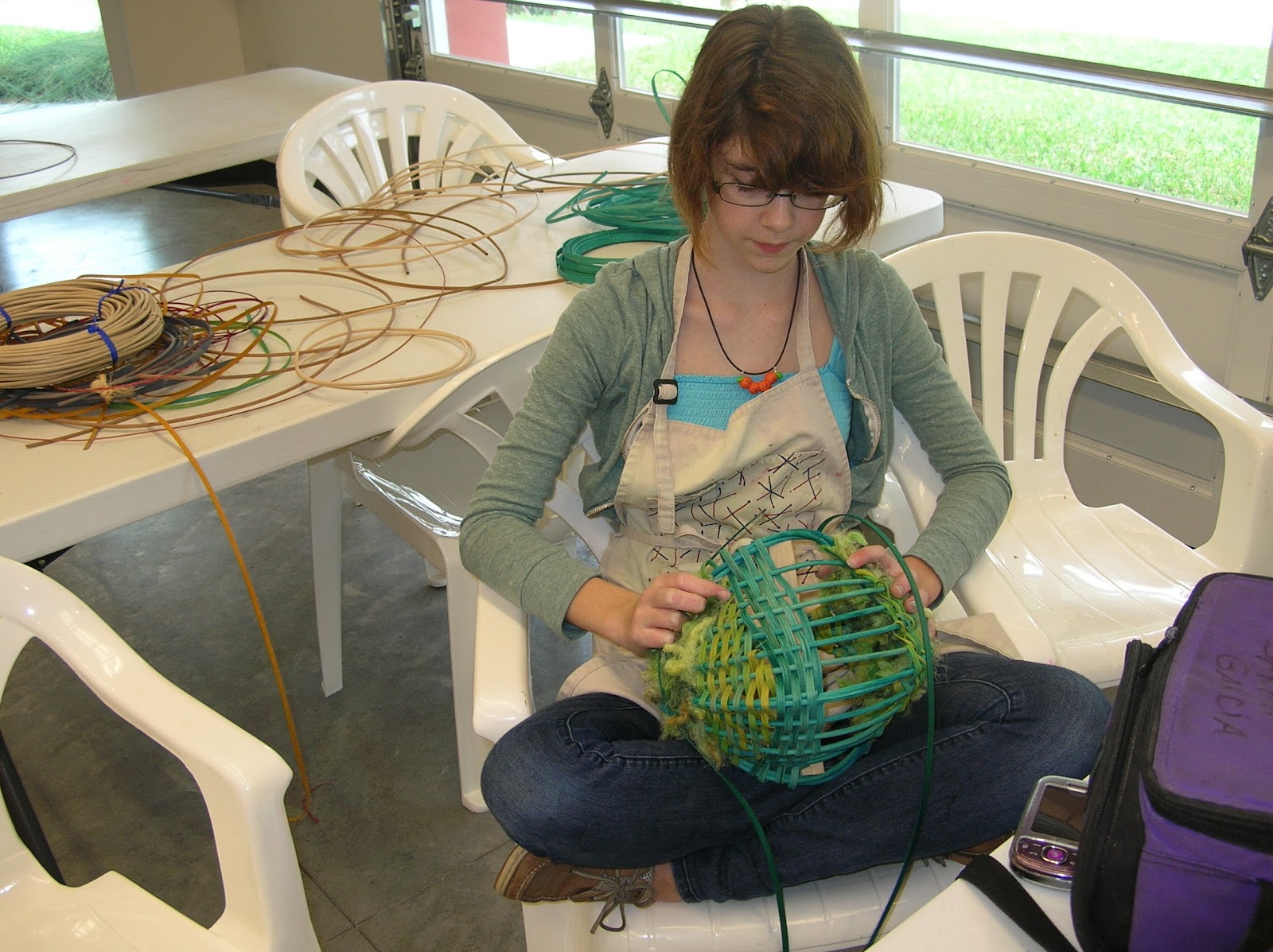Friday, September 2, 2016
I've Moved
I have moved to a new site, to a format that I hope will be easier on the eyes. Join me at
Tuesday, August 20, 2013
Pecan Season...a Florida Dyer's Favorite Time of Year!
We have two very prolific pecan trees in our back yard that have produced bushels of pecans during the thirty years that I have lived here. Yet in all that time I have only been able to eat one or two. But there are quite a few very well fed squirrels that live here and happen to be quicker and more efficient harvesters than I am. I could be furious, but instead I am grateful that they leave me the green hulls which I always look forward to using to dye fabric this time of year. Besides, I have to admit watching the squirrels with thier little muzzles and paws stained a deep chocolate brown from the hulls, making the look like little clowns is rather amusing.
Here is some silk I dyed last year.
This silk scarf I dyed with.....
Green pecan hulls tied with bits tradescatia leaves, onionskins pennies and steamed, then simmered in acochineal solution.
Detail of above silk scarf.
Green pecan hulls, with pennies solar heated with an iron post mordant.
Camphor leaves folded in silk then solar shibori dyed in dye extracted from green pecan hulls.
Eucalyptus and camphor leaves folded in silk then solar shibori dyed in dye extracted from green pecan hulls.
Green pecan hulls and green citrus fruit tied in silk and solar heated in a copper pot.
The nuts are still coming so I'll be busy gathering the hulls my little friends are kind enough to leave for me.
Tuesday, August 13, 2013
Designing Textiles with Nature's Palette
The Colors of Nature or Printing and Dying with Florida plants.
In this six week class:
Learn to dye and print beautiful fabrics and yarns with
materials right in your back yard and kitchen, and how to capture the exquisite
marks of nature by employing her processes.
You will explore ancient dyes and dye
methods such as setting up and dying with an organic indigo vat, dying cochineal insects. The use and obtaining of various “mordents” to alter color and impart color fastness will be demystified . A large portion of the class will be
devoted to helping you discover the more exciting and eco-friendly methods
making your own dyes, inks and prints with plants that are locally available. You will also be introduced to “rust” "compost and fermentation mesthods.
Silk scarf printed with chaste tree leaves and hibiscus. Various wool and mohair dyed with a variety
of common Florida plants.

Samples of " direct contact printing" (a method inspired by the work of India Flint) using two different mordants. Left alum+cream of tartar+iron Right alum+cream of tartar.


Wool and silk printed with eucalyptus leaves and dyed with pecan hulls.
Botanical printed paper. Left pecan leaves curcumin roots on the Right chaste tree leaves with hibiscus flowers.
Left a student printed silk with annato seeds and dipped the edges into the indigo vat.. Right another sutdent's experiment with pecan hulls on silk.
Or try a One Day Workshop:
Where you will learn how to extract dyes and prints from plants that are in your own yard and capture the essence of nature on paper, wool, silk and other fabrics. You will leave this workshop with enough information and hands on experience to get you started in the fascinating craft of natural dying and printing.
Botanical Printed Art paper.
Subscribe to:
Comments (Atom)



















































